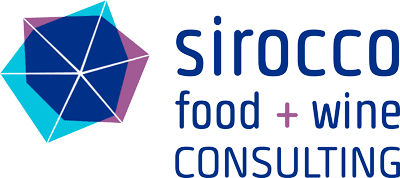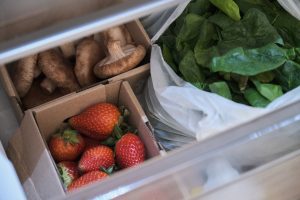Food businesses and storage warehouses seek Food Safety Certification to show compliance with regulations, to sell their products to large retailers, to export, to align with their supply chain requirements and to guarantee safe food to their customers. In North America, in Europe and in the South Pacific, Safe Quality Food (SQF) is a certification standard of choice. It is the international standard that small companies can attain with a minimal budget, and it is also the chosen food safety standard to export to Canada and the United States.
When a small business is choosing SQF certification, one of the barriers they face is having the necessary expertise and team to develop the written program, to implement it and maintain it sustainably. The SQF Code Edition 9 requires two practitioners, a lead practitioner and a backup. While the primary and the substitute practitioners need not be full-time employees, they must be employed by the site and hold a valid HACCP certificate. This training must be recognized by the International HACCP Alliance. A list of HACCP courses is available here.
The second barrier to entry for small companies is for the SQF team to develop a food safety plan. For food manufacturing, Codex HACCP is the reference. For Storage and Distribution, Codex HACCP or Preventive Controls are acceptable.
Maintaining a food safety plan is mandatory for SQF certification. Practitioners must perform food safety risk assessments on incoming food, materials and packaging. They must also consider each process step to ensure that hazards (“risks”) are not introduced or enhanced as part of the production, storage, holding and distribution process. If you are a small business, here are ten tips and best practices for the development of your HACCP/food safety plan under SQF 9:
- Whether you are in the manufacturing or warehousing sector, you will want to follow the Codex HACCP guidelines to get started with SQF. Specifically, you should follow the five preliminary steps of HACCP (see page 25).
1) Designate the food safety team
2) Describe your products and product specifications
3) Document the intended use of the food (and potential misuse of the food) and consumer groups, including at-risk populations
4) Develop a process flow diagram
5) Confirm that the flow diagram is correct by tracing the process from receipt of food all the way to distribution. - SQFI Tip Sheets are also good to review. Tip Sheet 6 offers an HACCP Program overview. Recordings may be useful, too. See Risk Mitigation Strategies under SQF 9 Presentations.
- In step 2, clearly identify if the food is ready to eat (RTE), Ready to Cook (RTC), Ready to reheat or ready to rehydrate and consume. The processing methods must be identified in the food safety plan. Food that will not be further processed can present higher risks than non-RTE foods. If consumers are expected to cook a raw product, instructions must be clearly printed on the package with safe internal temperature targets. Time-temperature limits must be validated to ensure safety. In 2022, a raw pizza manufacturer in France was asked to shut down production after an outbreak of pathogenic E. coli/HUS affected more than 50 consumers (mainly children) who had consumed cooked pizzas. An investigation is still in progress to determine why the pathogen was not killed by the baking process.
- Your flow diagram must cover the scope of the process, meaning all inputs such as food, packaging, labels, water, ice, steam, inert gasses or, compressed air, etc. The food safety team must also consider scheduled process delays, waste handling, recouping (“consolidation”) and rework. The team must review all production shifts and unexpected process delays resulting in potential bacterial growth incidents. Examples include:
-holding refrigerated food for too long in the loading area (ambient temperature dock) prior to shipping
-cooling process taking longer than usual due to equipment failure, lack of refrigeration or a slower food handling (manual) process. - Once steps 1 to 4 are implemented, consider researching recalls for your food products. This will help guide the hazard analysis under the HACCP principles. A good source of information is found on government websites which list recall notifications. The US FDA has particularly full recall and hazard references through the new FSMA Compliance dashboards and Recalls, Withdrawals and Safety Alert page.
- When tackling the first HACCP principle (list biological, chemical (radiological), and physical hazards and perform a food safety risk assessment), consider using hazard guides. Two commonly used guides are found at these links: FDA Hazard Guide and Canadian RDHI.
- For the hazard risk assessment under HACCP (Principle 1), you will need to document a methodology that will be used consistently throughout the hazard evaluation (See SQF 9 Food Manufacturing 2.4.3.8). This method must consider the severity of the hazard and its likelihood of occurrence. This step is designed to identify the significant hazard that will likely result in consumer illness or injury and recall. Various risk matrices are used for this step. Refer to our risk assessment blog to view an example of a risk matrix.
- When reviewing risks at process steps, consider whether food could be contaminated with transfer allergens or with environmental pathogens (Listeria, Salmonella spp.). Transfer allergens can become an issue when equipment and utensils are shared. Do you require a kill step for your manufacturing process or will the consumer or another business apply a control to eliminate or reduce bacterial hazards for safety? Will you need a swabbing/EMP program for the facility to seek and destroy harmful bacteria? If your facility is FDA-registered and your product Ready-To-Eat, you will need to implement Sanitation Preventive Controls under FSMA. This program will need verified. See Tip 9 and 10 for more info on the PC Rule for Human Food.
- SQF FSMA Addendum
System elements in the SQF Code 9 Food Manufacturing requires that food manufacturing businesses implement Codex HACCP guidelines even if the country where the food is sold has other regulations:2.4.3.17 Where food safety regulations in the country of production and destination (if known) prescribe a food safety control methodology other than the Codex Alimentarius Commission HACCP guidelines, the food safety team shall implement food safety plans that meet both Codex and food regulatory requirements.For FDA-registered businesses, this means that additional activities must be documented to fulfill FSMA regulatory requirements in the United States. In this regard, SQFI recently received from the US FDA communication stating that SQF code manufacturing requirements supplemented by the SQF addendum are aligned with the requirements of the Preventive Controls for Human Food (“the PC Rule”) under FSMA. Facilities that hold FDA registrations in the U.S. or foreign companies exporting food to the United States may, therefore, use their SQF program and the SQF addendum to comply with the PC Rule. The SQF addendum may be used when conducting internal audits or gap assessments. - FSPCA Revised Curriculum
The FSPCA Preventive Controls for Human Food course (Version 2) is in the pilot stage and will incorporate a larger section on Codex HACCP to allow PCQIs to develop food safety plans and meet SQF requirements. If you are required to comply with FSMA and SQF, stay updated on the launch of the new FSPCA/PCQI training course. Sirocco hopes to offer the revised FSPCA training course in the new year.
Sirocco Food + Wine Consulting’s certified SQF Consultants and Lead HACCP/PCQI instructors have been helping food businesses since 2013. We provide food safety plan creation services (HACCP, PC plans for Human Food, Canadian PCP plans) and HACCP/SQF/PCQI training services. If you require assistance with your HACCP plan or SQF program, contact us to request a quote. Subscribe to our newsletter for news on food safety regulations and industry standards.





